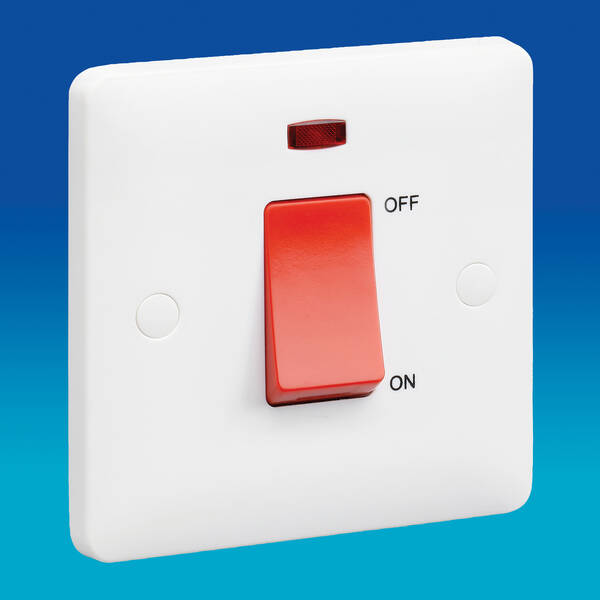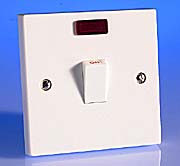Yes, 20a, DP. New one is from wickes for £3.x. The old one, I can't quite make out the brand.
A cheapy then. Better ones will have a snappier action and more robust contacts, both will help reduce arcing.

Yes, 20a, DP. New one is from wickes for £3.x. The old one, I can't quite make out the brand.
When it is turned on and you feel the switch, does it feel warm?
A cheapy then.


But that isolator will also arc if switched of under load.Hi,
This may be slightly over the top, but could it be worth considering a 2-pole isolator?
Something like this:
View attachment 252053
https://www.sparkswarehouse.com/col...ducts/bg-cprsd220-rotary-isolator-2p-20a-ip65
They are significantly 'beefier' than a standard switch, and easy to turn on and off.
Edit: although it wouldn't be a straight swap, cable glands and a fused outlet would have to be considered.
The problem is, when arcing occurs, the switch contacts are damaged. This causes higher resistance within the contacts, eventually causing even more heat damage.
A destructive feedback cycle!
...and yes, it is possible that there is something wrong with the immersion!
But that isolator will also arc if switched of under load.
However, I would bet that the isolator would last a good deal longer than a cheap switch from Wickes!
...and you would definitely not see the sparks in there
I may be wrong, but there seems to be a more positive 'break' in the contacts (and a greater travel distance), when turning a rotary isolator, compared to flipping a switch.
See if you can fit a 40 or 50 amp rated (cooker type?) switch into the box. It will be loaded at less than half of its capacity, rather than around three quarters, and will have heavier duty contacts etc.


...and as we have said regarding isolators;
Have you tried flicking the switch of a cooker switch?
The action normally requires more force and is far more positive, than with a standard switch.
Larger switches are obviously designed to cope with switching heavier loads
Do you know that works for a fact, or are you merely speculating?
From what I understand about the sparking issue is that the cause is the amount of energy present. Having a bigger or bigger-capacity switch does not reduce the energy present. The same size spark will be produced by the same energy. The only thing that would make a difference would be the contact material. Maybe some materials are better able to prevent arcing.
Also, are you sure there are no regulations that says you are not allowed to confuse electricians who might be working on that switch?
If you need to find a tradesperson to get your job done, please try our local search below, or if you are doing it yourself you can find suppliers local to you.
Select the supplier or trade you require, enter your location to begin your search.
Are you a trade or supplier? You can create your listing free at DIYnot Local
